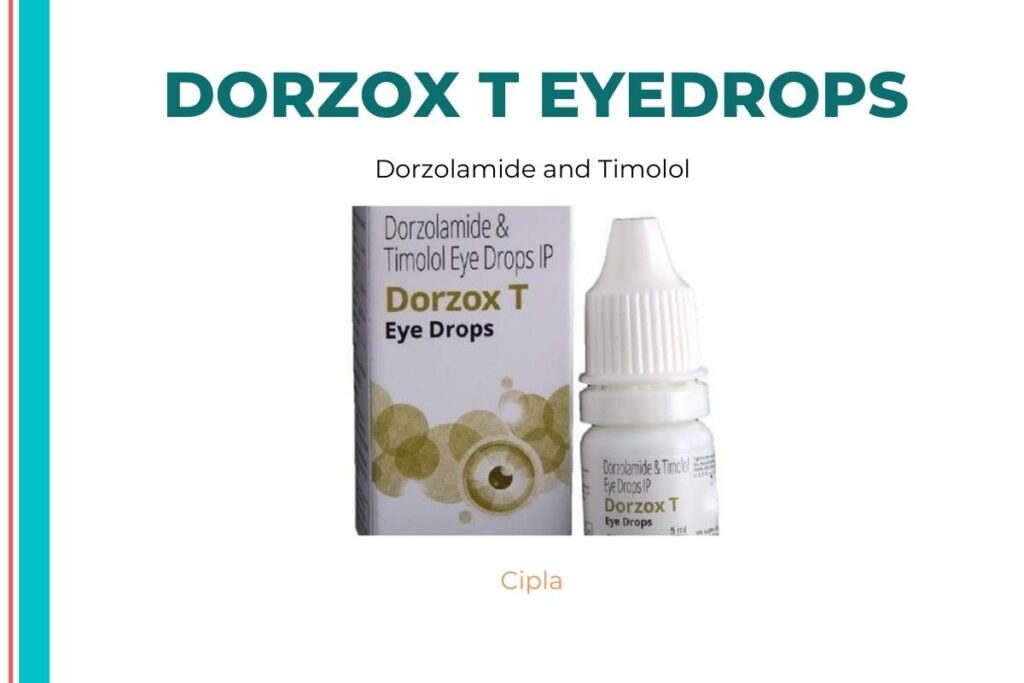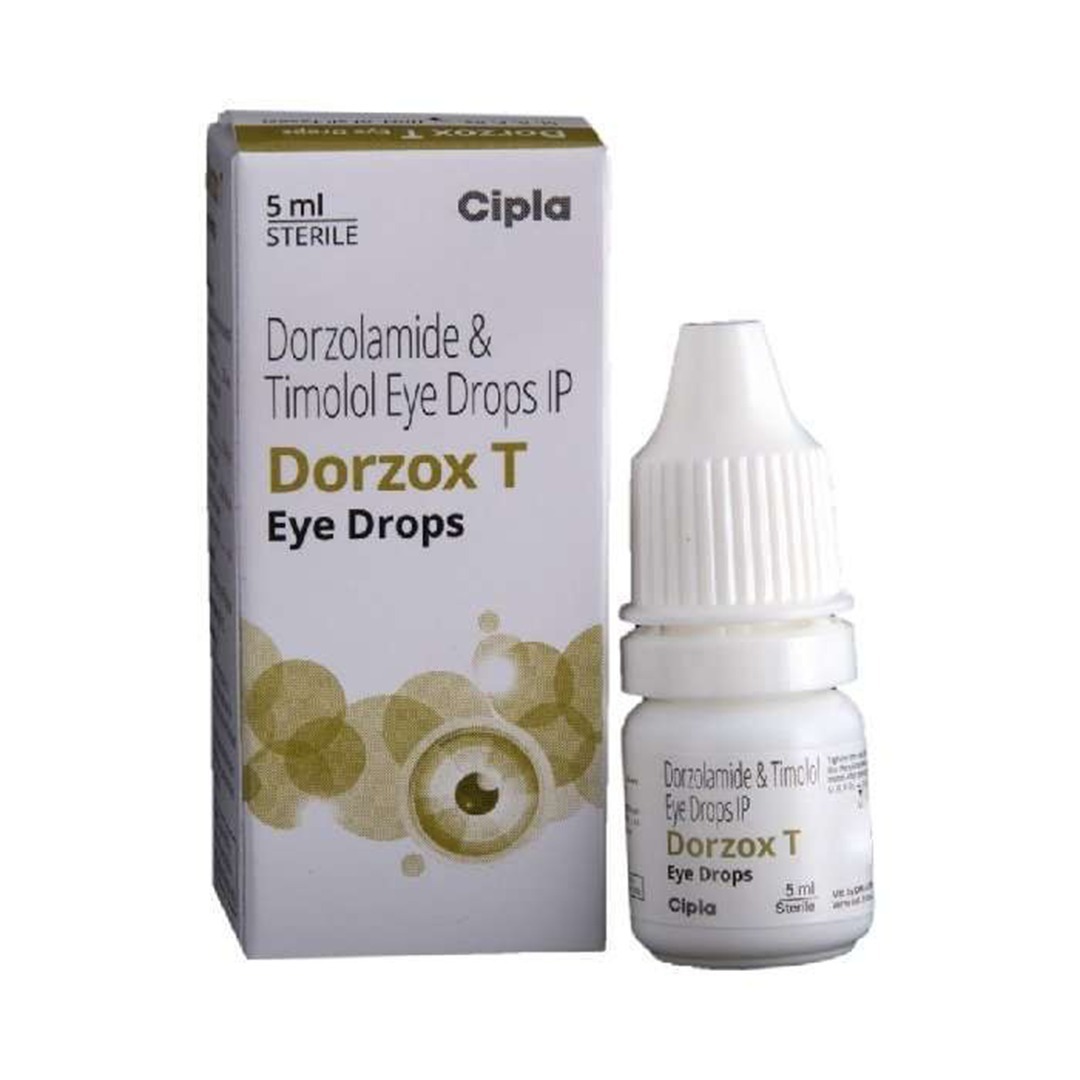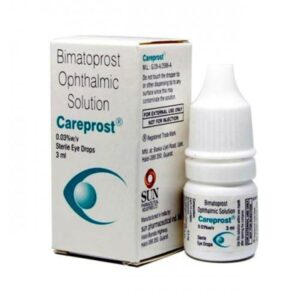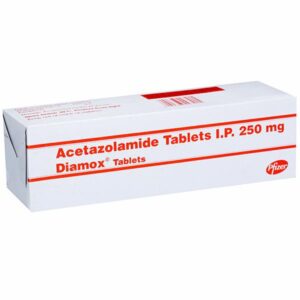Dorzox T Drops 5ml
Dorzox T Drops 5 ml is a type of antihypertensive combination drug known as an antiglaucoma agent. It’s used to treat open-angle glaucoma and ocular hypertension (high pressure in the eyes). Dorzox T Drops 5 ml is typically used when no other treatment for glaucoma or ocular hypertension is working. Glaucoma is an eye disorder in which unusually high pressure in the eye damages the optic nerve (which is necessary for optimal vision). Ocular hypertension is a condition in which the eye pressure rises due to a lack of aqueous humor drainage (fluid in the eye that maintains normal pressure by its continuous flow).
Dorzolamide and Timolol are found in Dorzox T Drops 5 ml. Timolol is a topical beta-blocker, and dorzolamide is a topical carbonic anhydrase inhibitor. Both aid in the reduction of aqueous humor (natural fluid in the eye) secretion via the ciliary body, resulting in a reduction in ocular pressure.
Dorzox T Drops 5 ml are taken with or without food, according to the doctor’s instructions. The dose you are given will be adjusted by your doctor based on your condition and response to the treatment. Itching, stinging sensations, burning sensations in the eyes, redness, blurred vision, weariness, drowsiness, headache, and dry mouth are all possible side effects. The majority of these Dorzox T Drops 5 ml side effects do not require medical care and will go away over time. However, if the negative effects do not go away, consult your doctor.
Make an effort not to quit taking your own meds. If you have an eye infection, allergies, closed-angle glaucoma, thyroid diseases, asthma, chronic obstructive pulmonary disease (COPD), diabetes, high or low blood pressure, depression, Raynaud’s phenomenon (numbness in various parts of the body), or slow heartbeats that make you faint, you should not use Dorzox T Drops 5 ml without consulting your doctor. Dorzox T Drops 5 ml should not be used during breastfeeding since Timolol can enter into breast milk and harm a nursing baby. If you are pregnant, breastfeeding, or on any other prescription or non-prescription medications, see your doctor before using Dorzox T Drops 5 ml. If you’re using more than one ophthalmic drug, give each one a five-minute break between doses.
Dorzox T Drops 5 ml are used to treat open-angle glaucoma and ocular hypertension.

Medicinal Advantages
Dorzox T Drops 5 ml is a topical ophthalmic solution. Open-angle glaucoma and ocular hypertension are efficiently treated with it (high pressure in the eyes). Dorzolamide and Timolol are combined as Dorzox T Drops 5 ml, an ocular solution (eye drops). Timolol is a topical beta-blocker, and dorzolamide is a topical carbonic anhydrase inhibitor. Both aid in the reduction of aqueous humor (natural fluid in the eye) secretion via the ciliary body, resulting in a reduction in ocular pressure.
Use Instructions
Take Dorzox T Drops 5 ml with or without food. Dorzox T Drops 5 ml is an ophthalmic solution marketed from Dorzox (eye drops). Based on your medical situation, your doctor will tell you how often you should take Dorzox T Drops 5 ml.
Storage
Store in a cool, dry location away from direct sunlight.
Dorzox T Drops 5 ml Side Effects
Dorzox T Drops 5 ml, like many drugs, has some negative effects. The following are the most prevalent Dorzox T Drops 5 ml adverse effects:
In the eye, there is itching, stinging, and a burning sensation.
Blurred vision and redness
Tiredness, drowsiness, and a headache are all symptoms.
In the mouth, there is a feeling of dryness.
Change in flavor.
These adverse effects do not necessitate medical treatment and will fade away with time. Although not all of these side effects are likely to occur, if they do, medical treatment may be required.
Drug Recommendations
If you are allergic to Dorzolamide and Timolol or any of its constituents, you should not take it. If you have a history of eye infection, allergies, closed-angle glaucoma, thyroid diseases, asthma, chronic obstructive pulmonary disease (COPD), heart, liver, and kidney diseases, diabetes, high or low blood pressure, depression, Raynaud’s phenomenon (numbness in various parts of the body), or slow heartbeats that make you faint, tell your doctor before taking Dorzolamide and Timolol. Blood sugar monitoring should be done on a regular basis since it can hide the signs and symptoms of acute hypoglycemia. Dorzolamide and Timolol should not be used during breastfeeding since Timolol can transfer into breast milk and damage a nursing baby. Before taking Dorzolamide with Timolol, tell your doctor if you take any other over-the-counter drugs, herbal supplements, or vitamin supplements.
Interactions Between Drugs
Dorzolamide and Timolol may interact with blood-pressure-lowering medications (clonidine, reserpine, amlodipine, nifedipine, diltiazem, metoprolol, verapamil), heart-related medications (digoxin), antidepressants (paroxetine, fluoxetine), antimalarial drugs (quinidine), and medicines for severe allergic reactions (adrenaline), blood thinners (a (sodium salicylate).
Dorzolamide and Timolol have a drug-food interaction that can produce dizziness, drowsiness, and difficulties concentrating. Alcohol drinking raises the risk in such situations. As a result, alcohol should be avoided or consumed in moderation.
Have or have ever had asthma, lung illness (including chronic bronchitis and emphysema), heart disease, diabetes, hyperthyroidism, severe allergic responses, myasthenia gravis, extreme hypoglycemia, and kidney or liver disease.
Safety Suggestions
ALCOHOL
It is uncertain how alcohol interacts with Dorzolamide and Timolol. Before drinking alcohol while taking Dorzolamide or Timolol, talk to your doctor.
PREGNANCY
If you are planning to become pregnant or are already pregnant, talk to your doctor before starting Dorzolamide and Timolol.
BREAST FEEDING
Dorzolamide and Timolol should not be used during breastfeeding since Timolol can transfer into breast milk and damage a nursing baby. Before taking Dorzolamide with Timolol, talk to your doctor.
DRIVING
Dorzolamide and Timolol can induce blurry vision, which can impair your ability to drive. In such instances, do not drive or use machinery. Only drive when you are attentive and your vision is clear.
LIVER
If you have a history of liver illness, tell your doctor. Before prescribing Dorzolamide with Timolol, your doctor will balance the benefits and hazards.
KIDNEY
If you have a history of kidney problems, tell your doctor. Before prescribing Dorzolamide with Timolol, your doctor will balance the benefits and hazards.
No habit formation
Advice on Diet and Lifestyle
Follow the doctor’s instructions and take the medication at regular intervals. When taking Dorzolamide with Timolol, do not take any additional over-the-counter drugs, herbal supplements, or vitamin supplements without first consulting your pharmacist or doctor.
Keep your eyes clean and clear of irritants by practicing excellent hygiene.
Even if some ophthalmic drugs irritate your eyes, do not rub them.
Fluid retention can be alleviated by reducing salt intake.
To avoid infection, wash your hands well and do not contact the dropper before using drops.
Recommendations
In children, Dorzolamide and Timolol should be taken with extreme caution, and if you observe abnormal breathing, wheezing, coughing, or odd pauses in breathing, cease using Dorzolamide and Timolol immediately and visit a doctor.
Inform your doctor if you have an eye injury or an infection.
It is recommended that you inform your doctor before any surgery that you are taking Dorzolamide and Timolol since it may affect the effects of some anesthetic medications.
Glaucoma does not display any symptoms at first, thus routine eye tests are required at least every two years to detect it.
Other details: This item is non-refundable.
Concerns of Patients
Glaucoma is a disorder in which the optic nerve, which connects the eye and the brain, is injured. It’s commonly caused by a buildup of fluid at the front of the eye, which raises the pressure inside the eye. If glaucoma is not recognized and treated early, it can cause vision loss.
The most prevalent type of glaucoma is open-angle glaucoma, which is a life-long disorder. It is caused by a clogged drainage angle between the iris and the cornea, which results in a blockage of eye fluid and an increase in ocular pressure.
Ocular hypertension is a build-up of pressure in the eye caused by a lack of aqueous humor outflow (fluid inside the eye that maintains normal pressure).
FAQs
Dorzolamide and Timolol are only to be used externally. To avoid contamination, wash your hands completely before applying and avoid touching the solution dropper’s tip. If you’re wearing contact lenses, take them out before you start. Raise and tilt your head back, gaze up, and pull the lower lid down to insert the drops into the affected eye.
Even if you feel better, you should not stop taking Dorzolamide and Timolol. Follow the doctor’s advice and stay on the prescribed treatment.
For a short period of time, dorzolamide plus timolol can induce hazy vision. In such instances, avoid driving and operating machinery until you feel better. If the impact lasts for a long time, see a doctor.
As soon as possible, apply the drops. If your next dose is approaching, skip the missed dose and return to your regular dosing plan.
After each use, make sure the container is tightly closed. Please don’t touch the dropper because it contaminates the medication and can cause eye irritation. It should be stored according to the recommendations on the booklet. It should be kept out of the reach of children and pets.
Glaucoma is a disorder in which the optic nerve, which connects the eye and the brain, is injured. It’s commonly caused by a buildup of fluid at the front of the eye, which raises the pressure inside the eye. If glaucoma is not recognized and treated early, it can cause vision loss.
Beta-blockers such as dorzolamide and timolol should be used with caution in individuals with spontaneous hypoglycemia or labile diabetes, as they may mask the signs and symptoms of acute hypoglycemia.








Leave a Reply
You must be logged in to post a comment.